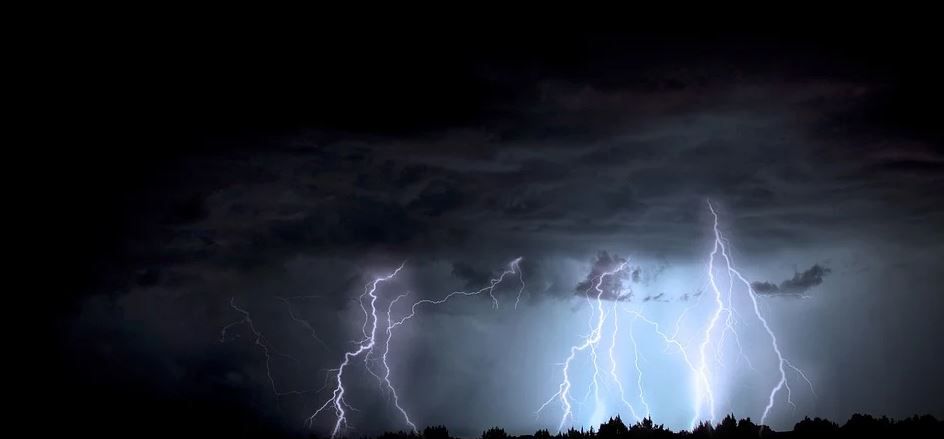I have heard quite a few outlets call for monsoonal thunderstorms in the forecast the next couple of days. Here's why that's not correct.
The monsoon is simply a large-scale shift in the upper-level wind pattern at 500 mb, or roughly 18,000 feet. In May and June, the winds come predominantly out of the west, or what's called the westerly jet.
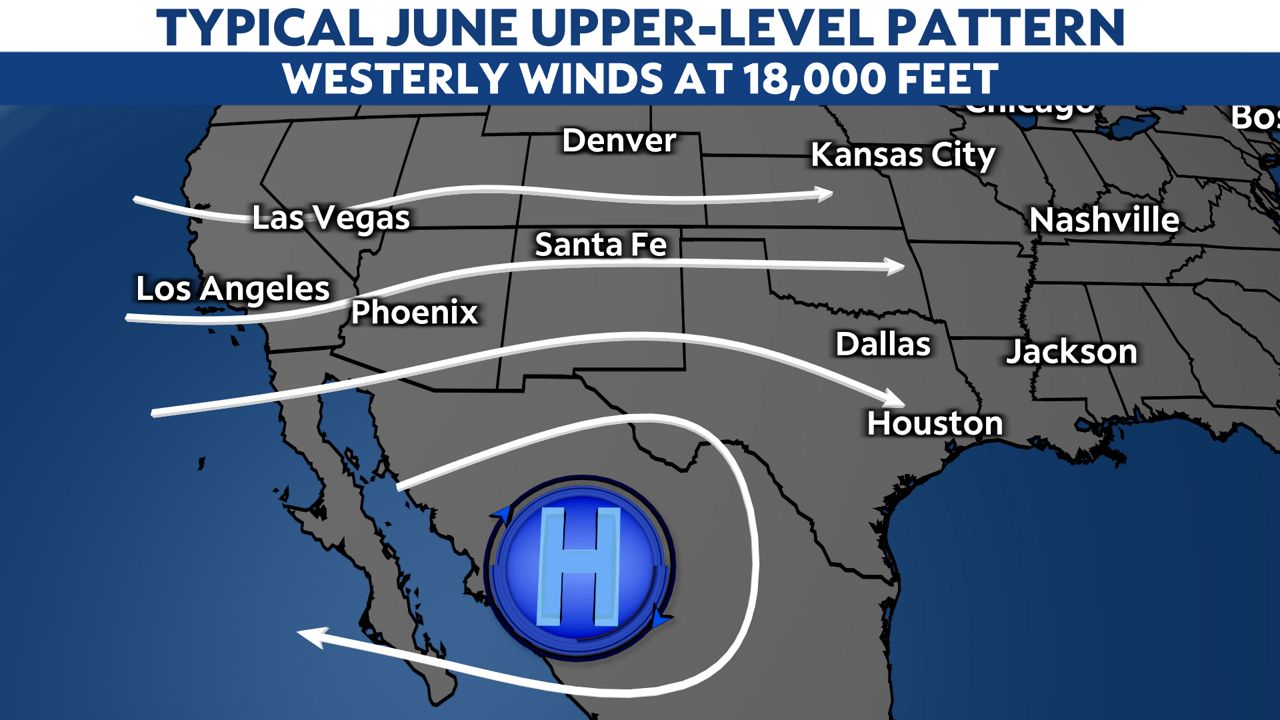
In July, the prevailing wind direction shifts as an upper-level area of high pressure sets up over Texas, transporting moist, tropical air from the Gulf of Mexico to arid desert regions in the Southwest.
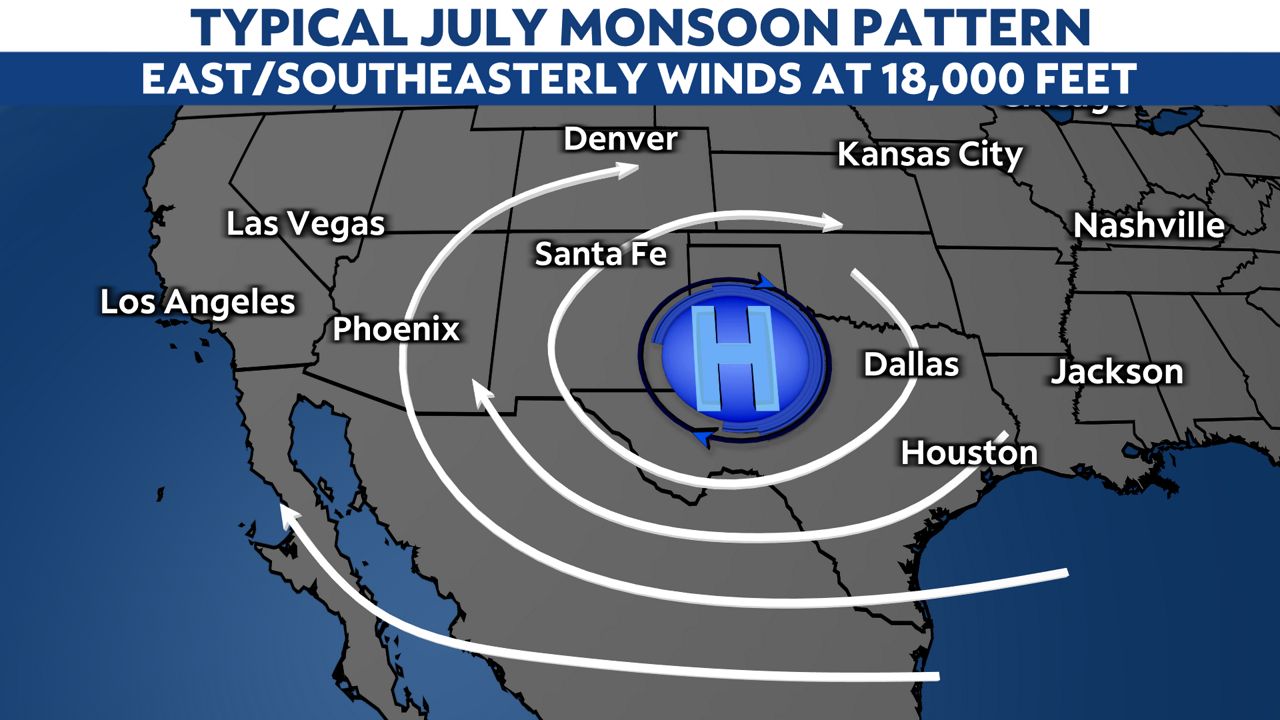
The actual pattern this week looks nothing like the monsoon pattern above, as there are several upper-level low disturbances located where the upper-level high pressure should be. For the sake of clarity, I've grouped them as one in the image, but rest assured, there are multiple circulations.
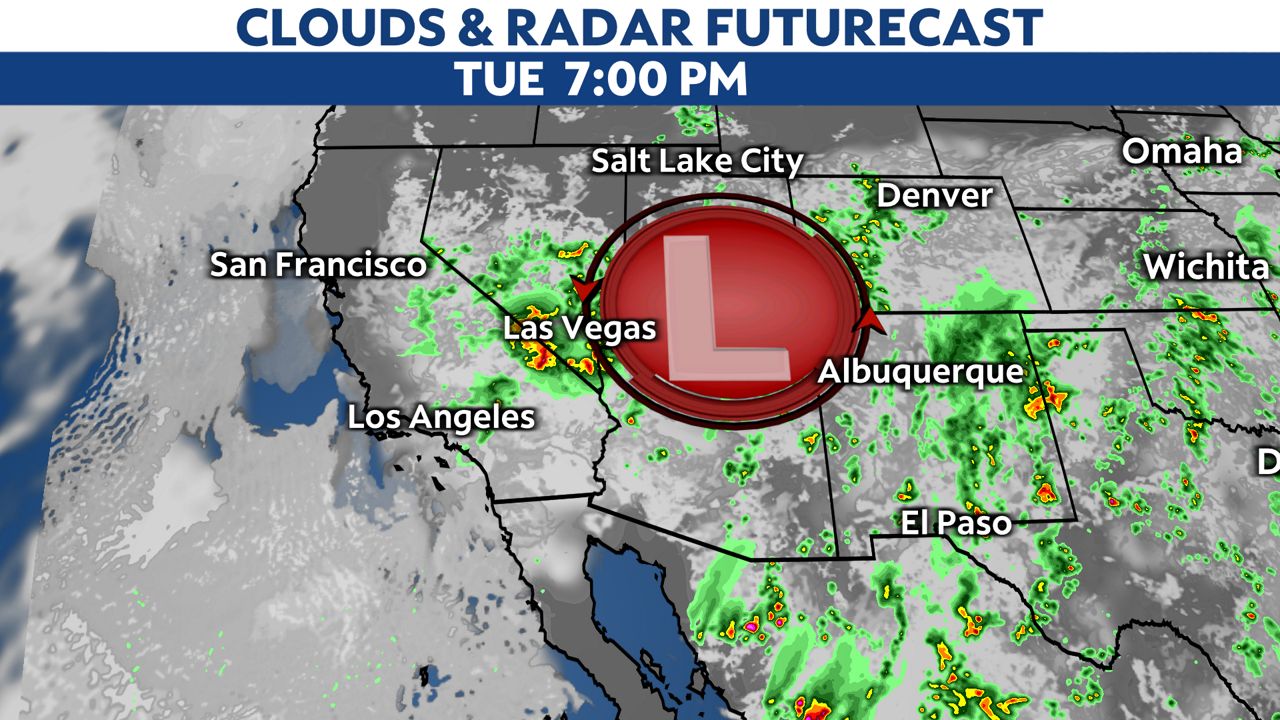
Moisture is being drawn from the south and the north and will wrap around the western side of this upper low Tuesday and Wednesday, possibly into Thursday.
This is an important distinction because the area of low pressure will provide the third and most important ingredient to thunderstorm initiation: lift. That means this pattern will not turn into a daytime heating thunderstorm pattern and nocturnal thunderstorms are not only possible but likely Tuesday night into Wednesday morning.
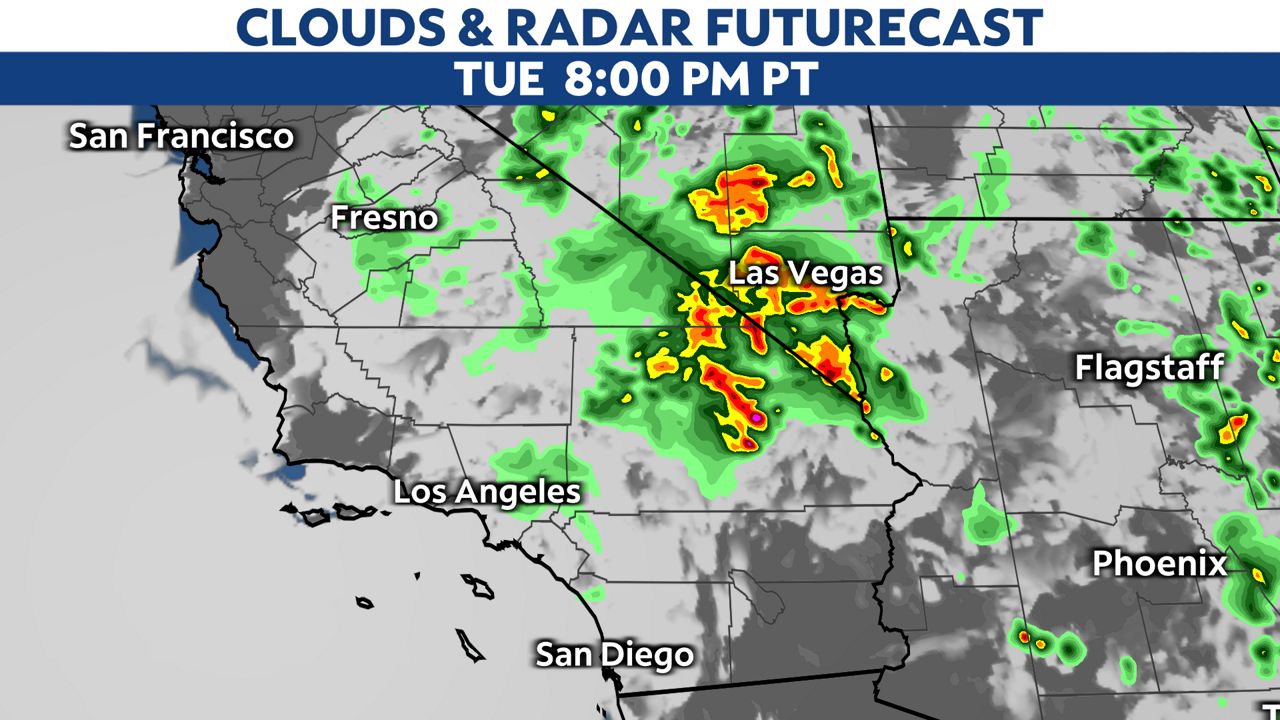
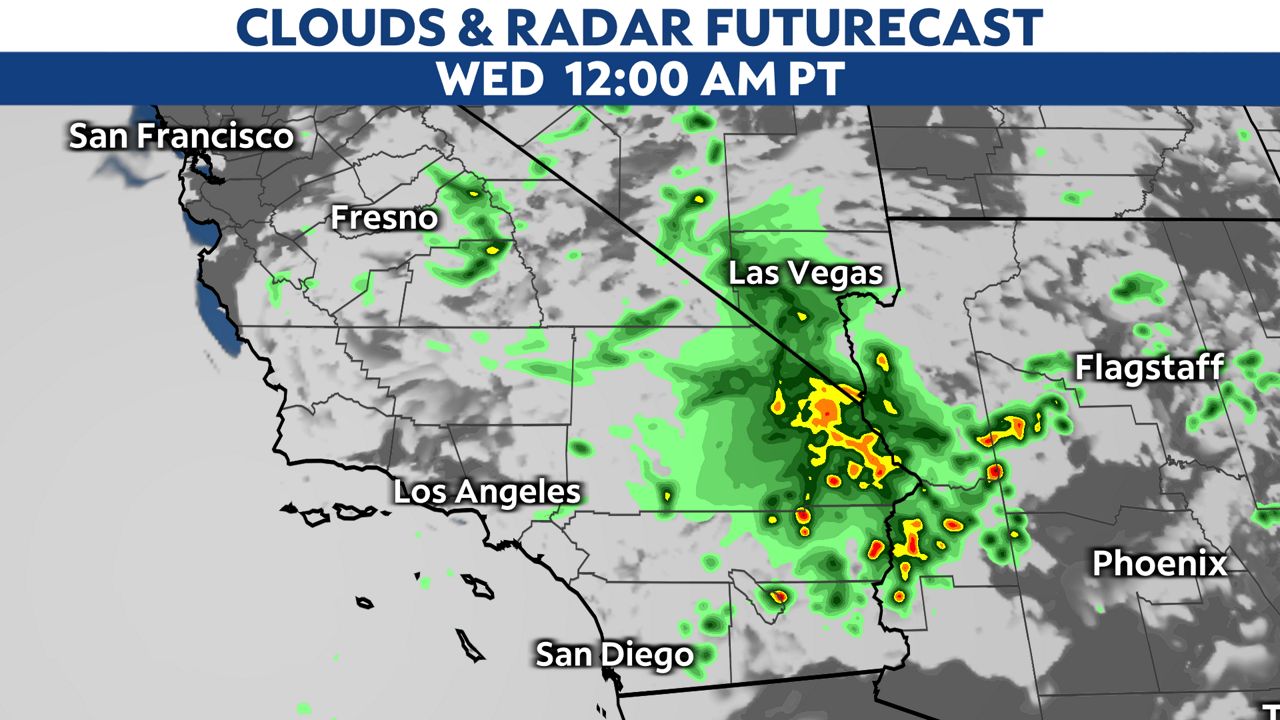
While the bulk of the very impressive activity looks to remain well to our east, if the track of the upper low shifts, the strongest storms with the heaviest downpours could shift into SoCal, as well.
If this were actually a true monsoon pattern, these thunderstorms would be fueled by daytime heating and would typically die out once the sun goes down. You can see from the computer model output above, that's simply not the case.



